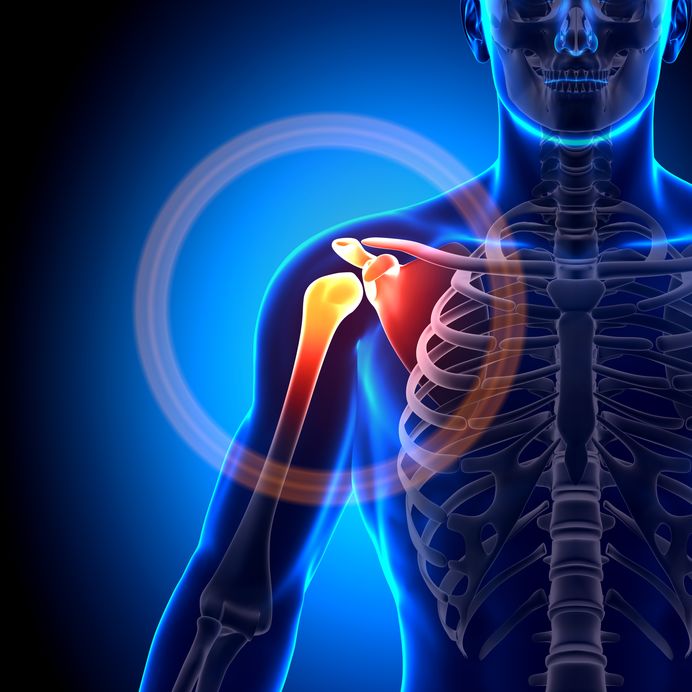Shoulder Pain
A comfortable shoulder is essential for everyday life and sports.
The shoulder region includes the collarbones, chest muscles, glenohumeral joint, shoulder blades and back muscles. It is a ball and socket joint. Unlike the deep socket of the hip joint, it is shallow and so able to move in all directions. Experts describe it as being like a seal balancing a ball on its nose. It achieves this with an intricate combination of static ligaments, dynamic stabilizing muscles (the rotator cuff muscles) and scapular stabilizing muscles.
During your physiotherapy exam I will accurately identify which of these structures is responsible for your shoulder pain and which treatment combination will be most effective in reducing it.
The 5 common causes of shoulder pain.
Shoulder tendonopathies:
- Rotator cuff injuries (acute, chronic or acute on chronic).
- Shoulder impingement pain.
- Overuse tendonopathy.
- Complete rotator cuff tear.
Shoulder instability:
- Shoulder instability.
- Glenoid labral lesions.
- Repetitive injuries.
- Dislocation and recurrent dislocations.
- Subluxations and recurrent subluxations.
- Scapular dyskinesis.
Acromioclavicular Joint Sprain
- Localized acromio-clavicular joint pain.
Frozen shoulder
- Shoulder stiffness.
- Shoulder stiffness secondary to surgery, injury to a neck nerve or brachial plexus.
- Idiopathic adhesive capsulitis.
- Frozen shoulder.
Referred pain into the shoulder
- Shoulder pain referred from problems in the cervical or thoracic spine.
- Shoulder pain referred from tension in the trapezius, levator scapula and rotator cuff muscles.
- Shoulder pain referred from tight muscles, trigger points and muscle fatigue.
Less common causes of shoulder pain.
- Nerve entrapment (e.g. the scapular or long thoracic nerves).
- Biceps tendonitis.
- Fracture and stress fractures.
- “Burner” neuropraxia.
- Tumor (e.g. bone tumors in the young)
- Referred pain from: the diaphragm, gall bladder, perforated duodenal ulcer, the heart, the spleen (left shoulder pain), apex of the lungs.
- Thoracic outlet syndrome.
- Axillary vein syndrome
Treatment techniques.
The treatment techniques we select will depend on your diagnosis and how irritable the condition is. Examples of the different treatment techniques we may use include:
- Rest and ice to sooth pain and reduce inflammation.
- Glyceryl trinitrate {GTN} and single corticosteroid injection (from your GP or Sports Medicine Physician).
- Manual therapy to the joints. (e.g. mobilization and manipulation)
- Manual therapy for muscles (e.g. hold-relax, soft tissue therapy including trigger point massage, muscle massage and myofascial release).
- Manual therapy for neural structures (e.g. neural tissue mobilization).
- Therapeutic exercise to increase shoulder flexibility:
- Early therapeutic exercises to correct underlying muscle weakness and/or instability. E.g. starting with closed chain rotator cuff exercises with hands on a wall, a table or tilt board practicing scapular retraction and protraction in a single plane, progressing to scapular elevation and depression of the entire scapula and then selective elevation of the acromion.
- Early kinetic chain exercises to relink the legs, hips, the back and shoulder together to restore the force-dependent motor activation patterns and normal biomechanical positions. E.g. reaching over head with two hand weights while doing a chair stand to integrate the hip extensors and shoulder retractors.
- Later conditioning exercises with isolated strengthening of the external rotators for correct balance between the internal and external shoulder rotators to prepare for sports and physical activity using theraband and dumbbells.
- Plyometrics and closed chain exercises to develop momentum and force while maintaining perfect ball and socket kinematics. (e.g. low rows, lawn mover actions, push-up progressions, scaption exercises and many others).
